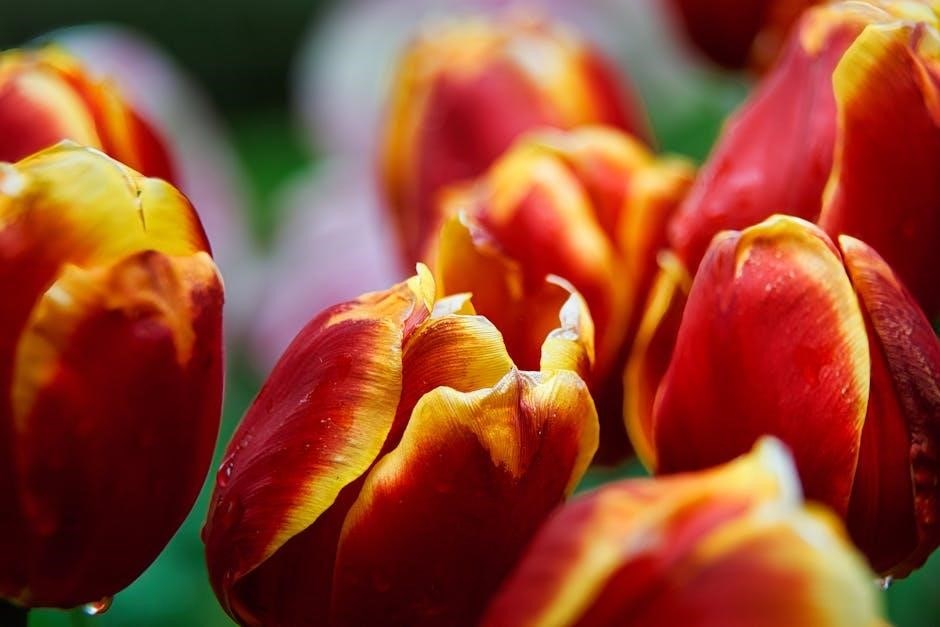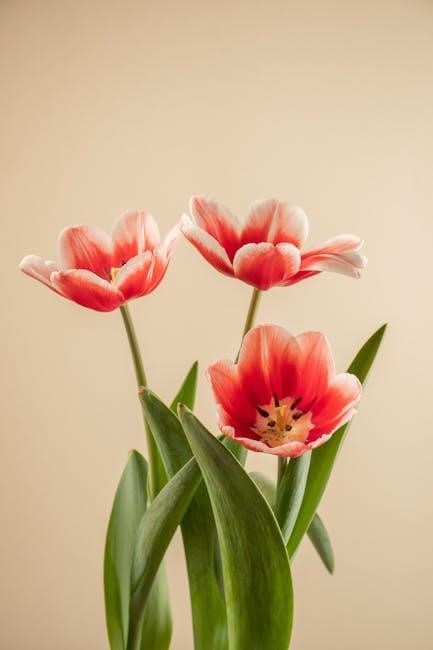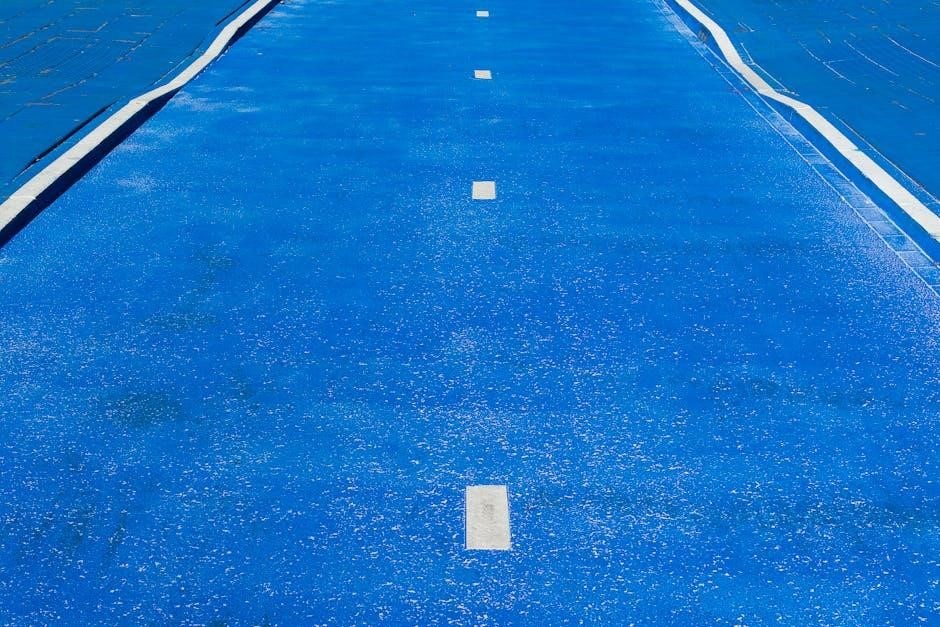The Holland Lop is one of the most beloved rabbit breeds worldwide‚ cherished for its compact size‚ endearing appearance‚ and vibrant color variety. Originating from the Netherlands‚ this breed has gained immense popularity as both a pet and a show rabbit; Known for their small‚ sturdy build and distinctive lop ears‚ Holland Lops are a favorite among rabbit enthusiasts.
One of the standout features of the Holland Lop is its diverse color palette‚ which has been meticulously documented in the Holland Lop Color Guide. This guide categorizes the breed into several color groups‚ including Agouti‚ Shaded‚ Self‚ and Broken patterns‚ among others. Each color group has its unique characteristics‚ making the Holland Lop a visually stunning breed with endless variety.

The color guide not only helps breeders and judges evaluate the rabbits but also serves as a tool for enthusiasts to appreciate the breed’s genetic diversity. From the rich tones of the Agouti group to the striking contrasts of the Broken pattern‚ the Holland Lop’s color variations are a testament to its genetic richness. This guide ensures consistency in breeding and showing‚ preserving the breed’s integrity while celebrating its natural beauty.
Whether you’re a seasoned breeder or a new enthusiast‚ the Holland Lop’s charm lies in its unique blend of size‚ personality‚ and color. Their compact size and gentle nature make them an ideal choice for many rabbit lovers‚ while their vibrant colors offer endless opportunities for exploration and admiration.

ARBA Standards for Holland Lop
The American Rabbit Breeders Association (ARBA) has established specific standards for the Holland Lop breed‚ ensuring consistency in breeding‚ showing‚ and evaluating these rabbits. These standards cover various aspects‚ including general type‚ body structure‚ fur quality‚ and color markings. Adherence to these guidelines is crucial for breeders and enthusiasts to maintain the integrity and uniqueness of the Holland Lop.
General Type
The Holland Lop is known for its compact‚ sturdy build‚ with a short‚ massive‚ and thickset body. The topline should start behind the head and carry back to a hindquarter of equal depth‚ creating a balanced and proportionate appearance. When viewed from the front‚ the chest should be broad‚ exhibiting width between the front legs. The shoulders should be short with depth nearly equal to width‚ but not exceeding the width of the hindquarter. The hindquarter itself should be broad‚ deep‚ and well-rounded‚ with depth approximating width. The animal should be well-muscled‚ and a small‚ simple dewlap is permitted in does.
Faults in the body include a lack of depth‚ long or narrow shoulders‚ chopped‚ pinched‚ or undercut hindquarters‚ flatness over the hips‚ and large dewlaps in does. Severe faults include low head mount‚ long or narrow body‚ and flat or dipped topline over the shoulder.
Head
The head of a Holland Lop should be massive in appearance‚ with good width beginning at the front of the crown and rounding down between the eyes to an extremely short and well-filled muzzle. The cheeks should be full and round‚ and the head should be set high and close to the shoulders. The size of the head should be in proportion to the body‚ and the eyes should be bold and deep-set.
Faults in the head include a pinched muzzle‚ flat cheeks‚ and narrowness between the eyes. Severe faults include a narrow or long head‚ or a head that is too small to balance with the body.
Ears
The ears should hang close to the cheeks from a strongly defined and properly positioned crown. They should be thick‚ wide‚ well-rounded at the tips‚ and well-furred. The ears should be positioned just behind the eyes‚ with a length equal to or slightly longer than the jawline. They should balance with the size of the head.
Faults include thin‚ narrow ear openings; pointed‚ folded‚ or poorly furred ears; and ear length that does not balance with the head size.
Crown
The crown should be a strongly defined ridge that appears to sit on top of the head‚ adding to its massive appearance. It should determine ear placement‚ ear control‚ and the size of the ear openings. The crown should be evaluated for side-to-side width‚ wrapping from the top of the head down to just behind the top of the eyes‚ resulting in no space between the ear and the eyes when viewed from the side. The width from front to back should allow the ear to open fully‚ and the depth should define the crown‚ consisting of both cartilage and fur.
Faults include a lack of a strongly defined crown‚ a crown not positioned just behind the eye‚ narrow side-to-side or front-to-back crown width. Severe faults include poor ear control.
Body‚ Bone‚ Feet‚ and Legs
The body should be short‚ massive‚ and thickset‚ with a topline that starts behind the head and carries back to a hindquarter of equal depth. The chest should be broad‚ exhibiting width between the front legs‚ and the shoulders should be short with depth nearly equal to width. The hindquarter should be broad‚ deep‚ and well-rounded‚ with depth approximating width. The animal should be well-muscled‚ and a small‚ simple dewlap is permitted in does.

The legs should be short‚ thick‚ straight‚ and heavily boned for the size of the animal. White toenails are preferred on Broken Pattern animals‚ but colored or mismatched toenails should not disqualify them. Faults include colored or mismatched toenails on Broken Pattern animals‚ and severe faults include long or fine bone‚ or weak ankles. Disqualification from competition applies to Solid Pattern animals with general toenail disqualifications.
Fur
The fur should be glossy‚ dense‚ fine in texture‚ and uniform in length‚ approximately 1 inch long. It should gradually roll back into its normal position when stroked from the hindquarters to the shoulders. Faults include thin‚ silky‚ long‚ harsh‚ soft‚ wooly‚ or extremely short fur.
Color and Markings
All colors should conform to one of the recognized descriptions in the Holland Lop Color Guide. The Solid Pattern classification includes all recognized colors within the recognized groups‚ while the Broken Pattern classification includes all recognized colors within the recognized groups in combination with white. Faults in Broken Pattern animals include unbalanced nose markings‚ white on one or both ears‚ incomplete eye circles‚ and uneven pattern distribution. Faults in Solid Pattern animals are specified under each color description.
Disqualifications from competition include Solid Pattern animals with foreign-colored spots or eye color other than specified in the color description. Broken Pattern animals are disqualified for the complete absence of color on one or both ears‚ absence of color around one or both eyes‚ or eye color other than specified in the color description.
Condition
Condition is evaluated based on ARBA definitions‚ with points allocated to ensure the rabbit is in optimal health and physical state. This includes factors such as weight‚ muscle tone‚ and overall appearance.

By adhering to these ARBA standards‚ breeders and enthusiasts can ensure the Holland Lop remains a breed of exceptional quality‚ beauty‚ and charm.

Agouti Color Group
The Agouti Color Group is one of the most distinctive and popular color categories within the Holland Lop breed‚ characterized by its unique banding and ticking patterns. This group is named after the agouti gene‚ which creates the striking banded effect on the fur. The Agouti group is further divided into several recognized colors‚ each with its own specific characteristics and genetic traits. These colors are highly prized for their beauty and complexity‚ making them a favorite among breeders and enthusiasts alike.
Key Characteristics of the Agouti Color Group
Rabbits in the Agouti Color Group are identified by their banded fur‚ which results from the interaction of the agouti gene and other genetic factors. The fur exhibits distinct bands of color‚ with the surface color‚ intermediate band‚ and undercolor all playing a role in the overall appearance. The ears‚ face‚ and body all display this banding‚ creating a harmonious and visually appealing effect. Additionally‚ the Agouti group often features ticking‚ which are small‚ scattered guard hairs that add depth and texture to the fur.
The Agouti Color Group is also notable for its wide range of colors‚ including Chestnut Agouti‚ Chocolate Agouti‚ Chinchilla‚ Chocolate Chinchilla‚ Lynx‚ Opal‚ and Squirrel. Each of these colors has its own unique description‚ as outlined in the Holland Lop Color Guide. The guide provides detailed specifications for each color‚ ensuring consistency in breeding and evaluation.
Chestnut Agouti
The Chestnut Agouti is one of the most iconic colors in the Agouti group. The surface color on the top and sides of the body is a rich chestnut brown‚ ticked with jet black guard hairs. The intermediate band is a well-defined orange over a dark slate-blue undercolor. The chest is a light brown over a dark slate-blue undercolor‚ and the top of the tail is black‚ sparsely ticked with light brown‚ over a dark slate-blue undercolor. The nape of the neck is orange‚ and the ears are laced in black. The eyes are brown‚ adding to the overall warmth of this color.
Faults in the Chestnut Agouti include animals that are too light or too dark in surface color‚ or too light in the color of the intermediate band or undercolor. These faults can detract from the richness and balance of the color‚ making it less desirable in show settings.
Chocolate Agouti

The Chocolate Agouti is a variation of the Chestnut Agouti‚ with a slightly warmer and sweeter tone. The surface color on the top and sides of the body is a rich chestnut brown‚ ticked with chocolate guard hairs. The intermediate band is tan over a dove-gray undercolor‚ and the chest is a light brown over a dove-gray undercolor. The top of the tail is chocolate‚ sparsely ticked with tan‚ over a dove-gray undercolor. The nape of the neck is tan‚ and the ears are laced in chocolate. The eyes are brown‚ complementing the warm tones of the fur.
Faults in the Chocolate Agouti include animals that are too light or too dark in surface color‚ or too light in the color of the intermediate band or undercolor. These faults can disrupt the balance of the color‚ making it less appealing to breeders and judges.
Chinchilla
The Chinchilla color is another standout in the Agouti group‚ known for its striking contrast and delicate appearance. The surface color on the top and sides of the body is pearl white‚ ticked with jet black guard hairs. There is a black band at the top of the intermediate band‚ which is a well-defined pearl white over a dark slate-blue undercolor. The chest is pearl white over a dark slate-blue undercolor‚ and the top of the tail is black‚ sparsely ticked with white‚ over a dark slate-blue undercolor. The nape of the neck is white‚ and the ears are laced in black. The eyes are brown‚ adding warmth to the overall color;
Faults in the Chinchilla include animals that are too light or too dark in surface color‚ or too light in the color of the intermediate band or undercolor. Brown patches or brownish intermediate bands are also undesirable‚ as they disrupt the clean‚ crisp appearance of the color.
Chocolate Chinchilla
The Chocolate Chinchilla is a variation of the Chinchilla color‚ with a warmer and richer tone. The surface color on the top and sides of the body is pearl white‚ ticked with dark chocolate guard hairs. There is a chocolate band at the top of the intermediate band‚ which is a well-defined pearl white over a dove-gray undercolor. The chest is pearl white over a dove-gray undercolor‚ and the top of the tail is chocolate‚ sparsely ticked with white‚ over a dove-gray undercolor. The nape of the neck is white‚ and the ears are laced in chocolate. The eyes are brown‚ complementing the warm tones of the fur.
Faults in the Chocolate Chinchilla include animals that are too light or too dark in surface color‚ or animals with indistinct rings. These faults can make the color appear less vibrant and less well-defined.
Lynx
The Lynx color is one of the most unique and striking in the Agouti group‚ with a blend of lilac and fawn tones. The surface color on the top and sides of the body is lilac mingled with fawn‚ and there is a lilac band at the top of the intermediate band. The intermediate band is fawn over an off-white undercolor‚ and the chest is fawn over an off-white undercolor. The top of the tail is lilac‚ sparsely ticked with fawn‚ over an off-white undercolor. The nape of the neck is fawn‚ and the ears are laced in lilac. The eyes are blue-gray‚ adding a cool contrast to the warm tones of the fur.
Faults in the Lynx include animals lacking the lilac influence in the surface color‚ making them appear too fawn‚ or animals with indistinct rings. These faults can detract from the unique appearance of the color‚ making it less desirable in show settings.
Opal
The Opal color is another distinctive variation in the Agouti group‚ known for its blue and fawn tones. The surface color on the top and sides of the body is blue mingled with fawn‚ and there is a blue band at the top of the intermediate band. The intermediate band is fawn over a medium slate-blue undercolor‚ and the chest is fawn over a medium slate-blue undercolor. The top of the tail is blue‚ sparsely ticked with fawn‚ over a medium slate-blue undercolor. The nape of the neck is fawn‚ and the ears are laced in blue. The eyes are blue-gray‚ complementing the cool tones of the fur.
Faults in the Opal include animals that have a light color on the surface‚ in the intermediate band‚ or for creamy undercolor. Disqualification from competition applies to animals with white undercolor‚ as it disrupts the balance of the color.
Squirrel
The Squirrel color is a variation of the Opal‚ with a slightly different tone and pattern. The surface color on the top and sides of the body is blue mingled with white‚ and there is a blue band at the top of the intermediate band. The intermediate band is white over a medium slate-blue undercolor‚ and the


